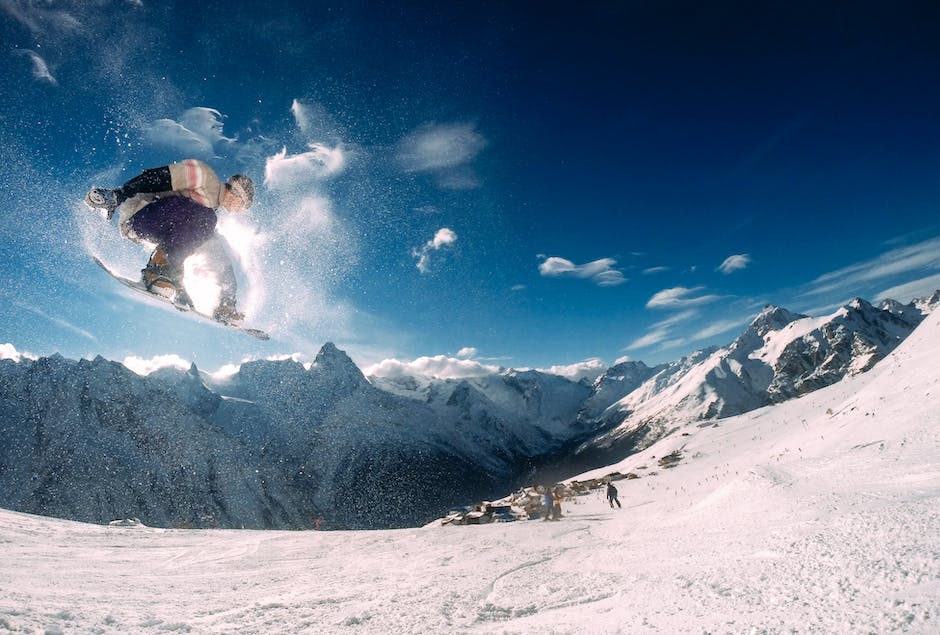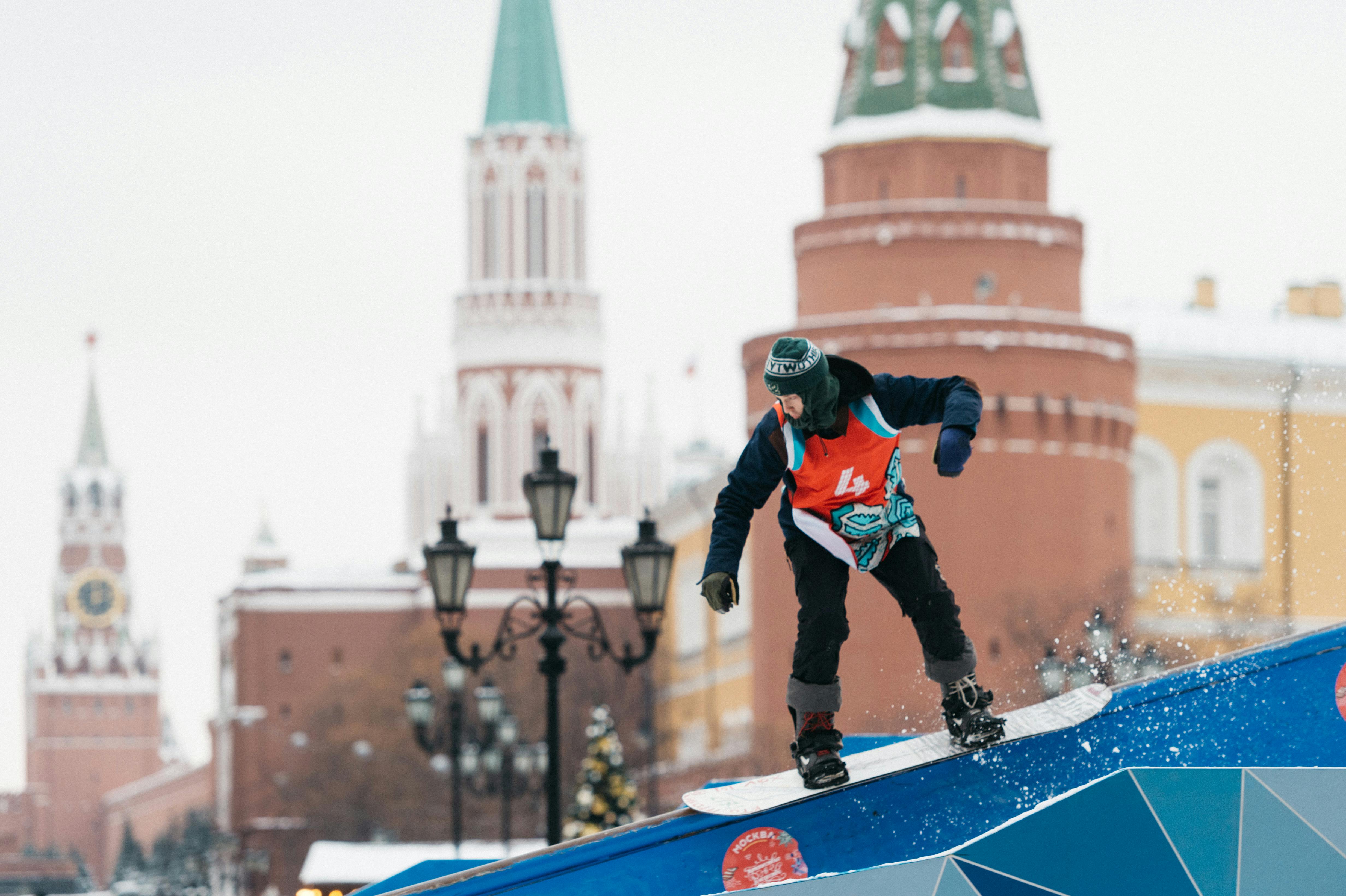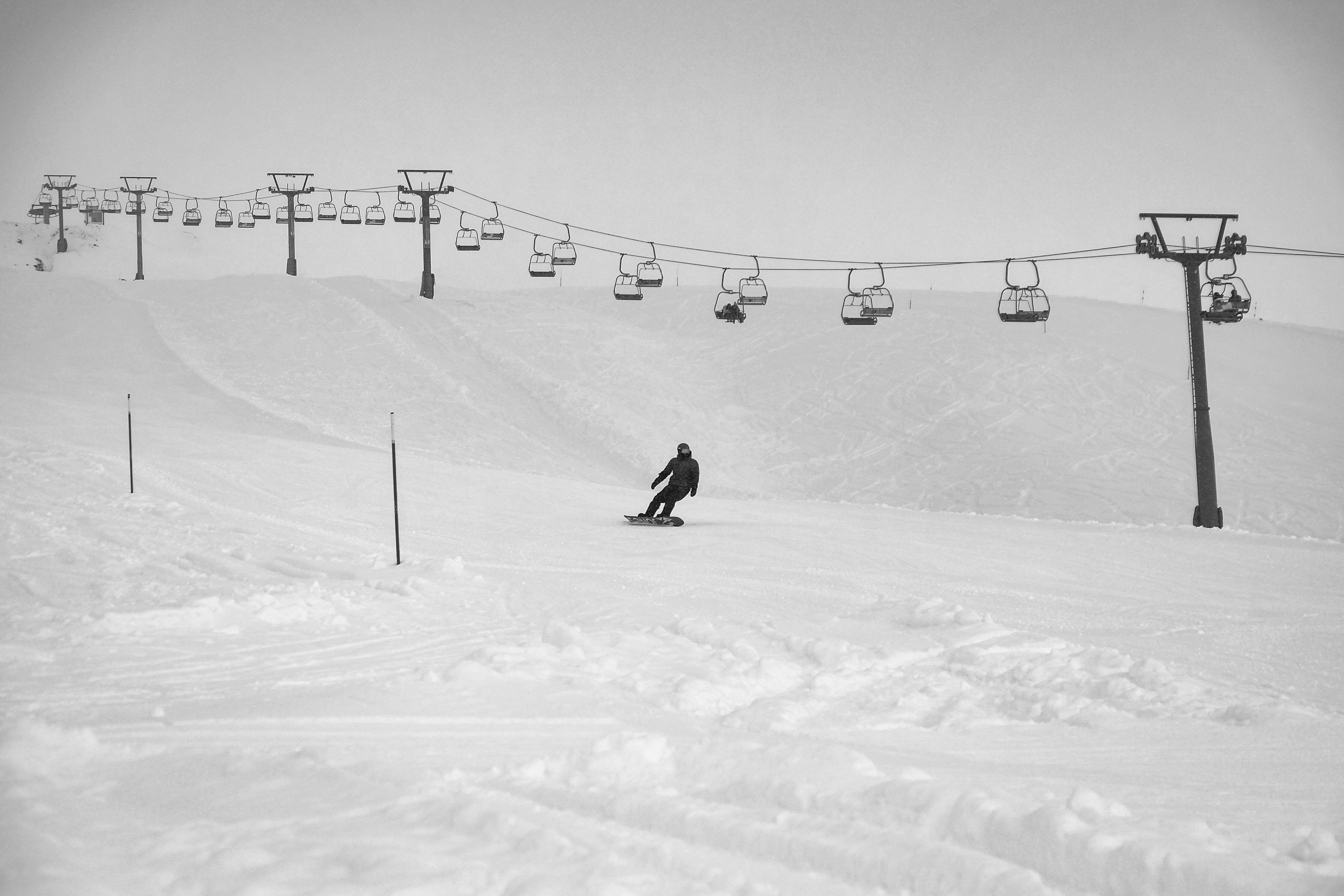What To Wear For Snowboarding

Snowboarding is an exhilarating and enjoyable winter sport that can be enjoyed by people of all ages and skill levels. Whether you are a beginner or an experienced rider, it is important to choose the right clothing to ensure you stay comfortable and safe while out on the slopes. Knowing what to wear for snowboarding can make all the difference in having an enjoyable experience or a miserable time. In this article, we will provide some tips on how to dress for a day out on the slopes.When it comes to what to wear for snowboarding, layering is key. Start with a base layer made of synthetic materials such as polypropylene or polyester. These layers will help wick away sweat and moisture and keep you warm and dry. On top of that, add a mid-layer such as a fleece or wool sweater. This layer should be slightly thicker than the first and will provide insulation against the cold temperatures. Finally, add an outer layer that is waterproof and windproof like a ski jacket. Make sure the jacket has adjustable cuffs, pockets, hoods, and drawstrings so you can lock in the warmth when needed. In addition to these layers, don’t forget to wear snow pants, waterproof gloves or mittens, face protection such as goggles or sunglasses, and a warm hat or beanie.
Snowboards
A snowboard is the most important piece of snowboarding gear. Snowboards come in a variety of shapes and sizes, and are designed for specific types of riding. All-mountain boards are the most versatile and can be used for any type of terrain, while freestyle boards are designed for performing tricks in parks or halfpipes. Freeride boards are designed for powder and backcountry riding, while alpine boards are designed for speed and racing.
Bindings
Snowboard bindings attach your feet to the board, and come in a variety of styles. Strap bindings are the most common type, with two straps that wrap around your boot to keep it secure. Step-in bindings require special boots that have metal pins on the bottom which snap into place on the binding. Both types provide support and control while riding.
Boots
Snowboard boots provide comfort and support for your feet while riding, and come in a variety of styles to suit different needs. Soft boots are flexible and allow you to move freely on the board, while stiffer boots provide more support at higher speeds or on challenging terrain. They also provide warmth in cold conditions, as well as waterproofing to keep your feet dry.
Protective Gear
Protective gear is an essential part of snowboarding safety. Helmets protect your head from injury, while wrist guards protect your wrists from sprains or broken bones if you fall on them. There is also body armor that can protect against impacts from rocks or trees, as well as impact shorts that help absorb impacts when landing jumps or tricks. Finally, goggles protect your eyes from cold winds or glare from the sun off the snow.
Stay Dry With Waterproof Clothing Options
When it comes to outdoor activities, staying dry is essential. Whether you’re out camping, fishing, or just taking a walk in the rain, you don’t want to be soaked from head to toe. Luckily, there are waterproof clothing options available that can help keep you dry and comfortable in wet weather. From rain jackets and pants to waterproof boots and hats, there is an array of options that are designed to keep you dry and comfortable in any type of weather.
Rain jackets are a great option for keeping you dry in wet weather. They are typically made with a waterproof breathable fabric that allows moisture to escape while also blocking out water from the outside. Many rain jackets come with adjustable hoods and cuffs for extra protection against the elements. They also come with zippered pockets for convenient storage of small items such as keys or wallets.
Rain pants are another great way to stay dry while enjoying outdoor activities. Rain pants are designed with an elastic waistband for a snug fit as well as adjustable leg cuffs for extra protection from the elements. Like rain jackets, they also come with zippered pockets for convenient storage of small items such as keys or wallets.
Waterproof boots are essential when it comes to keeping your feet dry in wet weather conditions. They come in various styles and materials such as rubber, leather, and neoprene which all offer varying levels of waterproof protection depending on the type of activity you plan on doing. Waterproof leather boots offer extra durability and breathability that will keep your feet comfortable even in heavy downpours.
Finally, waterproof hats can help keep your head dry while still allowing air circulation around your head and face so you don’t get too hot or uncomfortable while wearing them. Many hats come with adjustable chin straps so you can get a snug fit without having to worry about it slipping off your head in windy conditions.
Overall, there are plenty of waterproof clothing options available that can help keep you dry and comfortable during outdoor activities in any type of weather condition. Whether it’s a light drizzle or heavy downpour, having the right clothing will ensure that you stay warm and dry no matter what Mother Nature has planned for the day!
Footwear for Snowboarding
Snowboarding is an amazing sport that has recently seen a surge in popularity. While it is an enjoyable activity, it also requires the right gear to ensure your safety and comfort. One of the most important pieces of equipment for snowboarding is a good pair of snowboard boots. The right pair of snowboard boots will provide you with the support and protection needed while you are on the slopes. They will also help you stay warm and dry while you are enjoying your time on the mountain.
When looking for snowboard boots, there are several different factors to consider. The first thing to consider is the fit. You want to make sure that your foot fits snugly in the boot and that it offers enough support for your ankles. Additionally, look for boots with extra insulation to keep your feet warm even in cold weather. Also make sure that they have a strong grip so that you don’t slip or slide on icy surfaces.
Next, consider the type of material used to construct the boot. Leather and synthetic materials are commonly used in snowboard boots, but some brands may offer other options as well. Leather tends to be more durable and long-lasting, while synthetic materials often provide more breathability and flexibility. Additionally, look for boots with waterproofing technology so that your feet stay dry no matter what conditions you find yourself in.
Finally, consider what type of style or design you prefer when choosing a pair of snowboard boots. Many companies offer different styles such as lace-up or slip-on designs as well as different colors and patterns so you can find something that fits your own personal style preferences.
No matter which type of snowboard boot you choose, make sure that it fits properly and provides adequate protection from the elements so that you can enjoy a safe and comfortable ride down the slopes!
Snowboarding Accessories
Snowboarding is an exciting winter sport enjoyed by many. It can be a great way to explore the outdoors and have fun with friends. Although snowboarding requires only the basics, there are a wide variety of accessories available that can help enhance your experience on the slopes. From safety gear to clothing and wax, here are some of the most important snowboarding accessories you should consider when hitting the slopes.
Helmet
Safety should always be your top priority when snowboarding, so a helmet is an essential accessory. Look for one that’s comfortable and fit snugly so it won’t move around too much while you’re riding. Make sure it has good ventilation and is certified for safety by the ASTM or EN 1077 standards.
Goggles
Goggles are important for protecting your eyes from wind and glare off the snow. Look for ones with good visibility, scratch-resistant lenses, and enough room to wear glasses underneath if needed. You may also want to look for lenses that are designed specifically for different conditions such as low light or bright sun.
Snowboard Boots
Finding the right pair of snowboard boots is essential for having a good time on the slopes. Look for boots that fit snugly but not too tightly, provide support around your ankle and heel, have good toe traction, and don’t cause any pain or discomfort when you’re riding.
Gloves/Mittens
Having warm hands while snowboarding is essential if you want to enjoy yourself on the slopes. Look for gloves or mittens with waterproof materials, insulation, wrist straps for extra security, soft liners to keep your hands warm and dry, and enough room in the fingers so you can still move them comfortably.
Clothing</h2

Protective Gear For Snowboarding
Snowboarding is an exhilarating and enjoyable winter activity. However, it can also be dangerous if you don’t take the necessary safety precautions. Wearing protective gear is essential for anyone who wishes to snowboard safely and without injury. The most important pieces of protective gear for snowboarding are a helmet, goggles, gloves, and boots.
A helmet is one of the most important pieces of protective gear for snowboarding. It protects your head from impacts that can cause serious injury or even death. Helmets come in a variety of styles and sizes so it’s important to get one that fits properly. Make sure the helmet has a snug fit but is not too tight as this can cause discomfort while riding down the slopes.
Goggles are another important piece of equipment for snowboarders. They protect your eyes from snow, ice, debris, and UV rays from the sun. Goggles come in a variety of styles so make sure to choose a pair that fits comfortably and provides adequate protection against wind and other elements you may encounter while on the mountain.
Gloves are an essential piece of equipment for protecting your hands from cold weather, abrasion caused by falls, and injuries caused by contacting sharp objects or edges on a board or mountain terrain. Look for gloves that fit snugly but are not too tight as this can restrict movement when gripping the board or poles when riding down slopes or maneuvering around obstacles on the mountainside.
Finally, boots are necessary for providing traction on icy surfaces, stability when turning on icy slopes, and protection from cold temperatures and wind chill factors at high altitudes. Look for boots that provide good ankle support and have enough cushioning to absorb shock when landing jumps or coming into contact with hard surfaces such as rocks or trees on the mountain terrain.
By taking the time to select quality protective gear for snowboarding you can enjoy this winter activity safely without putting yourself at risk of serious injury or worse while having fun in the great outdoors!
Layering Clothes For Cold Weather Conditions
When the temperature drops and the cold winter winds start to blow, you’ll need to layer your clothes if you want to stay warm. Layering your clothes is a great way to keep warm in cold weather conditions. By layering your clothes, you’ll be able to add and remove layers based on how cold it is outside. This will allow you to stay comfortable no matter what the weather brings.
The key to layering in cold weather conditions is to choose the right materials for each layer. Start with a base layer of lightweight, breathable material such as wool or synthetic fabrics like polypropylene or nylon. This base layer should fit snugly against your skin while still allowing air circulation. The next layer should be made from an insulating material such as down or synthetic insulation, which will help keep your body heat in and keep the cold out. The top layer should be made from a waterproof, windproof material such as Gore-Tex or other waterproof breathable fabric. This outer layer is designed to protect against wind, rain, and snow while still allowing air circulation so that you don’t get too hot.
When layering for cold weather conditions, remember that it’s important to have the right materials for each layer. Choose materials that are lightweight but provide good insulation and don’t forget about waterproofing for the top layer. Also remember that adding and removing layers can help adjust your comfort level in changing temperatures so make sure you have plenty of options available when layering up for cold weather conditions!
Choosing the Right Attire for the Terrain and Weather Conditions
When it comes to outdoor activities, choosing the right clothing and equipment is essential for safety and comfort. The terrain and weather conditions of your chosen destination can have a major effect on the type of attire you should choose. Different types of terrain will require different types of clothing and equipment, so it’s important to be aware of what you’re getting into before you set out.
For example, if you’re hiking in mountainous terrain, you’ll need to prepare for colder temperatures at higher elevations, so wearing layers is essential. You should also be sure to wear waterproof jackets and pants to protect from rain or snow. Additionally, it’s important to wear proper hiking boots that provide good grip on wet or slippery surfaces.
If you’re going to be spending time in a desert environment, lightweight clothing is best since temperatures can reach high levels during the day. It’s also important to wear loose-fitting clothing that lets air circulate around your body and keep cool. Sunblock is an absolute must in these environments, as well as a wide-brimmed hat to protect against sunburns.
No matter what type of terrain or climate you’re planning on exploring, it’s important to make sure that your attire is appropriate for the conditions. If you plan ahead and bring along the necessary clothing and equipment, you’ll be better prepared for any unexpected weather or terrain conditions that may arise during your trip.

Conclusion
Snowboarding is a great sport to enjoy the winter weather, and it is important to dress appropriately so that you stay safe and warm while out on the slopes. Layering your clothing is essential, as the temperature can change quickly in the winter months. Start with a base layer of synthetic or wool materials for wicking away moisture, followed by an insulating layer such as fleece or down. On top of that, wear a waterproof outer layer so you can stay dry in wet conditions. Finally, make sure to include accessories like gloves, hats, goggles and scarves to keep your extremities protected from the cold. With these tips in mind, you will be well-prepared for an enjoyable day of snowboarding.
With proper preparation and the right gear, you can make sure that your time out on the slopes is both safe and enjoyable. So grab your board and hit the slopes this winter – just make sure you are wearing all your layers!
